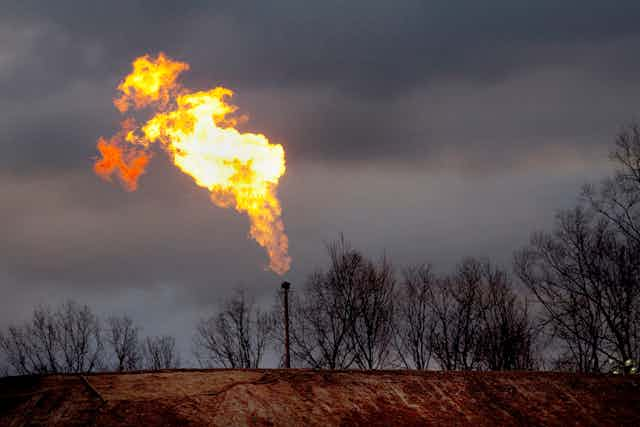It can be hard to know what to believe when it comes to fracking safety. Campaigners against the controversial oil and gas drilling technique say it can contaminate water supplies, pollute local air and cause dangerous earthquakes. But the fossil fuel industry contradicts these claims by pointing to reports that the risks can be managed and fracking operations set up safely.
Both sides have also been accused of misrepresenting the evidence. In 2013, the Advertising Standards Agency (ASA) ruled that the fracking firm Cuadrilla Resources had published misleading information exaggerating the strength of the evidence for the technique’s safety. More recently, the same company complained to the ASA that the charity Friends of the Earth stated in an advert that chemicals used in fracking could cause cancer. Cuadrilla said only chemicals deemed non-hazardous to groundwater would be used in any UK fracking operations.
No doubt this won’t be the last controversy about the hazards of fracking but it reminds us that there is a significant public health issue at stake here. In the US, almost 700 different chemicals have been used in fracking, some of which have been linked not just to cancer but also reproductive issues.
What’s more, some of these health problems have been directly linked with fracking operations. For example, one strong study of more than 10,000 babies born near fracking operations in Pennsylvania from 2009 to 2013 found that the 25% of mothers most exposed to fracking were 40% more likely to give birth prematurely than the 25% least exposed.
There are a number of papers looking at the potential for fracking to cause cancer in humans but as development of the disease takes years there are not yet any studies proving whether there is a connection or not.
Unknown in the UK
The problem is that there hasn’t been any large scale commercial fracking in other countries, and we do not yet know exactly which chemicals will be used if and when operations start. We also don’t know how fracking workers and local communities might be exposed to these chemicals in the short, medium and long term. Another problem is that chemicals that might appear harmless on their own could interact with other natural substances in the rock being fracked.
All this means we can’t say for sure how much of a risk new fracking operations outside of the US will pose to people living nearby. That’s why researchers are looking so closely at US studies analysing fracking substances used there and the exposures linked to fracking and the areas where it has been carried out.

We have a definitive source of information on cancer-causing substances in the WHO’s International Agency for Research on Cancer. This carries out research to identify proven human carcinogens (Class 1) as well as probable (2A) and possible (2B) ones. Class 1 human carcinogens in the IARC list that have been linked with fracking in the US or recorded near fracked wells include benzene, formaldehyde, crystalline silica dust in the form of quartz or cristobalite, and diesel engine exhaust.
Industries also often argue that even if people were exposed to these chemicals, it would not be enough to threaten their health. They also argue that the public is much more likely to be exposed to other sources of these chemicals from wider pollution, transport and food and drink consumption. Communities in areas likely to be fracked or affected by other forms of unconventional gas extraction appear unconvinced by such arguments.
Complex mixture
One of the issues is that it’s not possible to say for sure what will happen to the chemicals once they are injected into the ground. One study looked at chemicals used in the US called biocides, which prevent clogging in the fracking process. On their own, some of these are reportedly toxic and carcinogenic. But the authors also identified gaps in industry knowledge about what happened when the biocides mixed with plastic gelling agents, friction reducers and groundwater pollution.
They found the biocides sometimes degraded into carcinogenic formaldehyde and nitrosamines, and that some biocides could react with water to become more toxic and persistent. And they noted there had been 595 documented spills from fracked wells in 2013 in Colorado alone, giving some sense of the scale of the industry’s challenge to prevent pollution.
This lack of information may not be resolved even after fracking operations begin. Fracking companies in the UK say they will fully disclose the details of any chemicals they use. But there is still no legal requirement to reveal this information to the public and, so far, firms have only agreed in principle to disclose to the Environment Agency. As such, the controversy and conflict over fracking and its health impact looks set to continue for some time.

